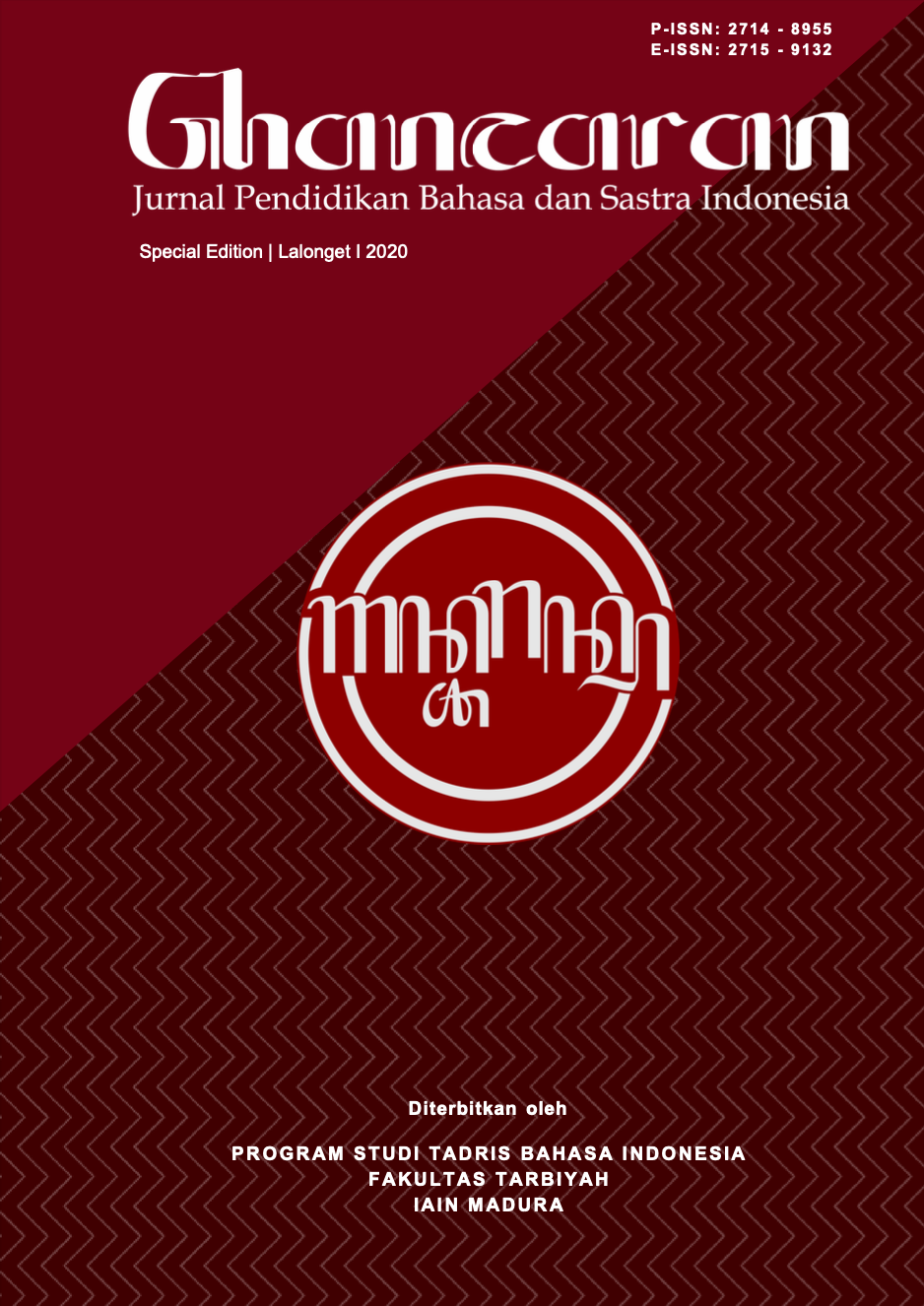MAKNA KATA BERDAMAI DALAM FRASA “BERDAMAI DENGAN COVID” DI ERA NEW NORMAL
 Abstract views: 429
,
Abstract views: 429
,
 XML downloads: 288
XML downloads: 288
Abstract
Downloads
References
Aan, Sugiantomas.,dkk.(2016). Humor Jui Purwoto, Cak Lontong, Panji Pragiwaksono, dan Ernest Prakasa dalam Stand Up Comedy (Analisis Makna Kontekstual, Makna Konseptual, dan Teori Humor dalam Kalimat Humor). Jurnal Bahasa dan Sastra Indonesia Universitas Kuningan, 4(1), 11-21.
Aminuddin. (2008). Semantik Pengantar Studi Makna. Bandung: Sinar Baru Algensindo.
Chaer, Abdul (2009). Pengantar Semantik Bahasa Indonesia. Jakarta: Gramedia Pustaka Utama.
Dash, N. S.,(2008). Context and Contextual Word Meaning. SKSE Journal of Theoretical Linguistic, 11(1), 21-31.
Daud Rodi Palimbong. (2015). Makna Kontekstual dalam Novel Diary Pramugari Karya Agung Webe. Jurnal KIP, IV(2), 15-27.
Indah, Arvianti. (2011). Kajian Konteks Dalam Tindakan Tutur Tidak Langsung. Jurnal Bahasa dan Sastra Universitas AKI, IV(2), 133-150.
Muzaiyanah. (2012).Jenis Makna dan Perubahan Makna. Wardah, 24(4), 145-148.
Parera, Jos. D. (1990). Teori Semantik. Jakarta: Erlangga.
Pateda, Mansoer. (2015). Linguistik: Sebuah Pengantar. Jakarta: Angkasa.
Prihantini, Ainia. (2015). Master Bahasa Indonesia: Panduan Tata Bahasa Indonesia Terlengkap.Yogyakarta: Bentang Pustaka.
Rizki Aburrahman. (2018). Peran Nazhariyyah Al-Siyaq (Teori Kontekstual) dalam memahami makna Al-Quran. Ihya Al-Arabiyah: Jurnal Pendidikan Bahasa dan Sstra Arab,4(2), 73-80.
Samsul, Bahri. (2016). Peran Al-Siyaq Dalam Menentukan Makna. Ittihad Jurnal Kopertis Wilayah XI Kalimantan,14(26),86-98.
Ghancaran: Jurnal Pendidikan Bahasa dan Sastra Indonesia uses an Open Access Policy under the Creative Commons Attribution-ShareAlike 4.0 International License. Authors publishing in this journal agree to the following terms:
- Ghancaran Journal holds the copyright and grants the journal rights for first publication with the work simultaneously licensed under a

The work is distributed under Creative Commons Attribution-ShareAlike 4.0 International License which allows others to share, copy, and redistribute the material in any media or format and adapt, remix, change, and develop the material even for commercial purposes, as long as it is stated credit and license derivative works under similar terms. - Authors may make additional contractual arrangements for non-exclusive distribution of the journal's published work version.
- Authors are permitted to post their work online (e.g., in institutional repositories or on their websites) before and during submission, as doing so may lead to productive exchange.



















